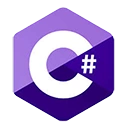C# is a versatile programming language used in various domains, including the gaming industry. In this brief overview, we'll explore how C# is employed in game development and provide a simple example of a game loop using C#.
Unity Game Engine
One of the most popular ways to utilize C# in game development is through the Unity game engine. Unity allows developers to create games for a wide range of platforms, from mobile devices to desktop computers and consoles.
C# is the primary scripting language in Unity, and it is used for game logic, physics, animations, and more. Game developers can use C# to create interactive and engaging gaming experiences.
Example: Basic Game Loop in C#
Let's take a simple example of a game loop in C# using Unity. This is the core structure that drives the gameplay in many games. In this example, we'll create a simple game where a ball moves to the right and bounces back when it reaches the screen edge.
using UnityEngine;
public class BallMovement : MonoBehaviour
{
public float speed = 5.0f;
private Vector3 direction = Vector3.right;
void Update()
{
// Move the ball
transform.Translate(direction * speed * Time.deltaTime);
// Check if the ball reached the right screen edge
if (transform.position.x >= 5.0f)
{
// Reverse direction
direction = Vector3.left;
}
// Check if the ball reached the left screen edge
if (transform.position.x <= -5.0f)
{
// Reverse direction
direction = Vector3.right;
}
}
}
This simple C# script in Unity moves the ball to the right and changes its direction when it reaches the screen edges. It is a basic representation of how game logic is implemented in C#.
Conclusion
C# is a significant player in the gaming industry, primarily through the Unity game engine. Game developers leverage C# to create interactive and immersive gaming experiences. The example provided showcases the basic structure of a game loop in C#.
For those interested in game development, exploring C# in Unity and understanding more advanced gaming concepts, such as physics, animations, and multiplayer capabilities, is the next step to creating engaging games.

